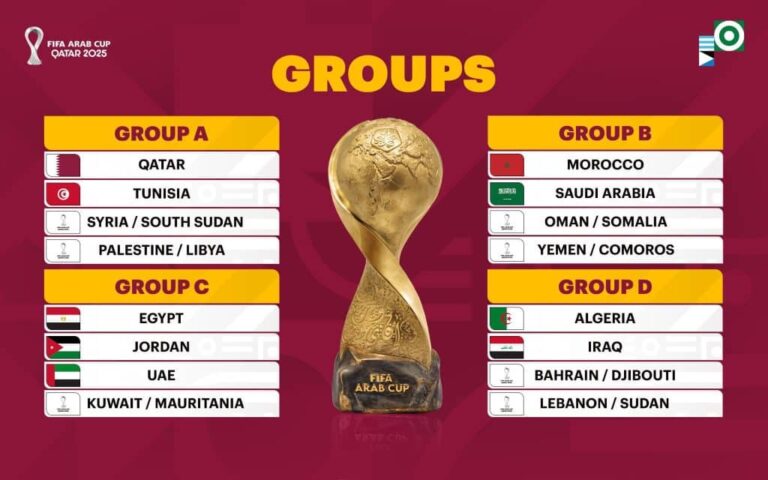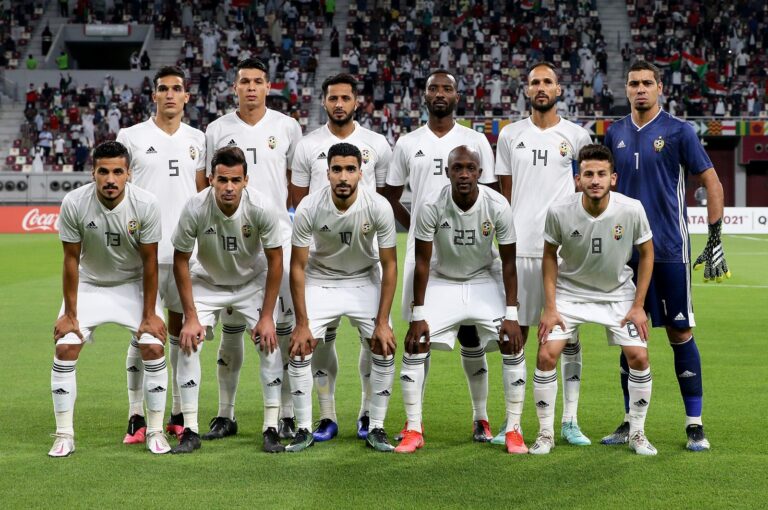We’re launching a new project. One that aims to empower Palestinian Football Fans across the world. To learn more and become a member of this exciting venture- visit canaanfc.com
Three games played. Three wins. Twelve goals scored. One conceded. Anyway you slice it, it is undeniable that there has been a change for the better in the Palestine camp.
Palestine’s last three competitive fixtures under Noureddine Ould Ali yielded nearly the exact opposite results. Zero wins. Zero goals. Eight conceded.
So why do some remain unconvinced?
Yes, the level of Singapore, Yemen and Comoros is below that of Saudi Arabia who put the nail in Noureddine Ould Ali’s coffin by dolling out a 5-0 hammering. That said, Palestine are not in Round 3 of World Cup qualifying not because they lost to Saudi Arabia and Uzbekistan away from home, but rather because they lost to Singapore and Yemen, the very same sides they brushed away last month.
Those six points that Palestine dropped would have been enough to deliver second place- and a spot amongst Asia’s best 12 teams.
Many keyboard warriors on Facebook either do not have the full context, or are not engaging in good faith when levying criticism. Context is important. Palestine has only won 32% of the 184 official games it has contested. That amounts to 58 wins, 49 draws, and 77 losses.
Palestine had never beaten either Singapore or Yemen by more than one goal before last month. Palestine is better than both sides, but historically, they are not that much better. Dispatching teams of that caliber by three or four goals is an activity usually reserved for the continent’s elite and even they have been struggling to do that as of late (In WCQ, neither Iran nor Iraq could beat Hong Kong by more than two goals for example. Qatar only beat Afghanistan 1-0. UAE only beat Malaysia 2-1).
Low Blocked
The signature tactical move of Noureddine Ould Ali? Sitting in a low block.
The low block is a defensive system where the players defend very deep in their own territory and restrict the space for opposition players to exploit. Palestine did this against illustrious and not so illustrious opponents attempting to counter sides.
Let’s take a look at how the former Palestine manager set his team up in his last match.
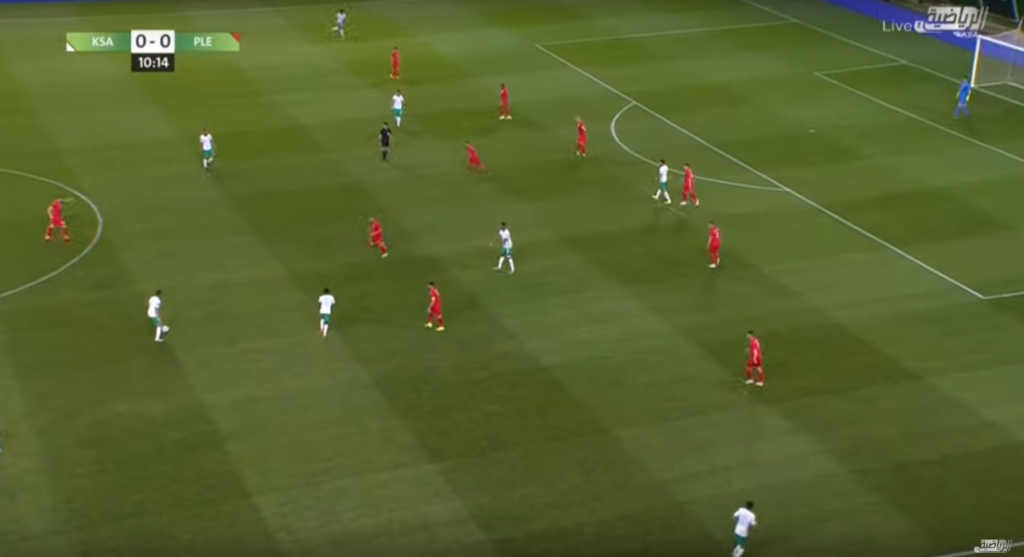
Look at that! 6-3-1 (marketed as a 4-2-3-1 and perhaps representing something close to that shape for the handful minutes when Palestine did have the ball). The Saudi ball carrier in this case has two very easy options for a high percentage pass and no pressure on him whatsoever. Remarkably, Saudi Arabia only took the lead in this game thanks to Toufic Ali’s goalkeeping bloopers, but let’s not get into that.
With Palestine chasing the game and trying to at least recover some sense of pride. This shape is what Ould Ali switched to when out of possession:
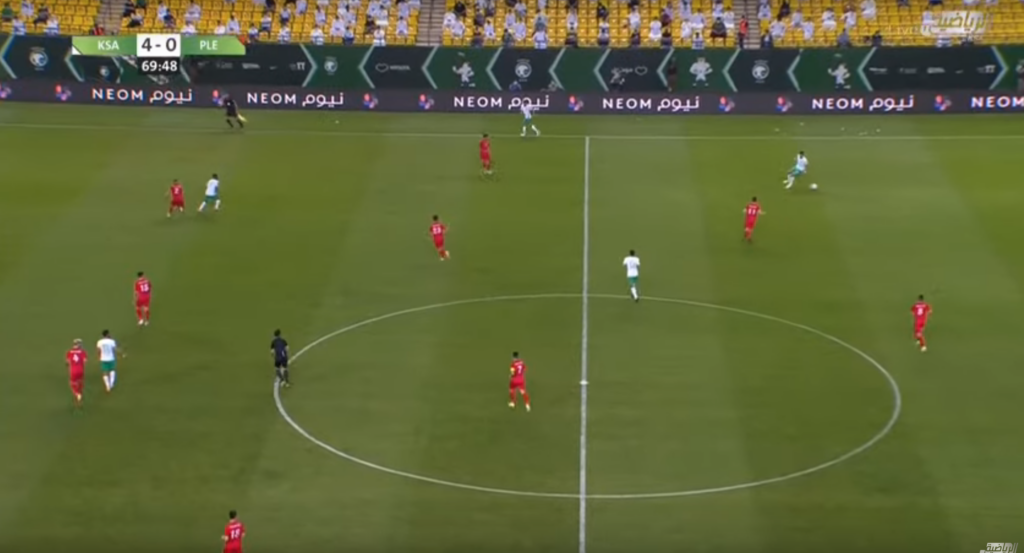
Here’s a moment in the game when Palestine just lost possession and it is your standard low block. The type of 4-4-2 you might have seen Sweden deploy against Spain at Euro 2020. Let’s not even get started on analyzing passing movements- which were mostly reduced to a hoof and hope approach.
This was not an approach limited to Saudi Arabia but to weaker teams too. The 1-0 loss to Yemen in November 2019 was an example of the same type of tactics- with a good amount of hopeful long balls played in the general direction of Mahmoud Wadi.
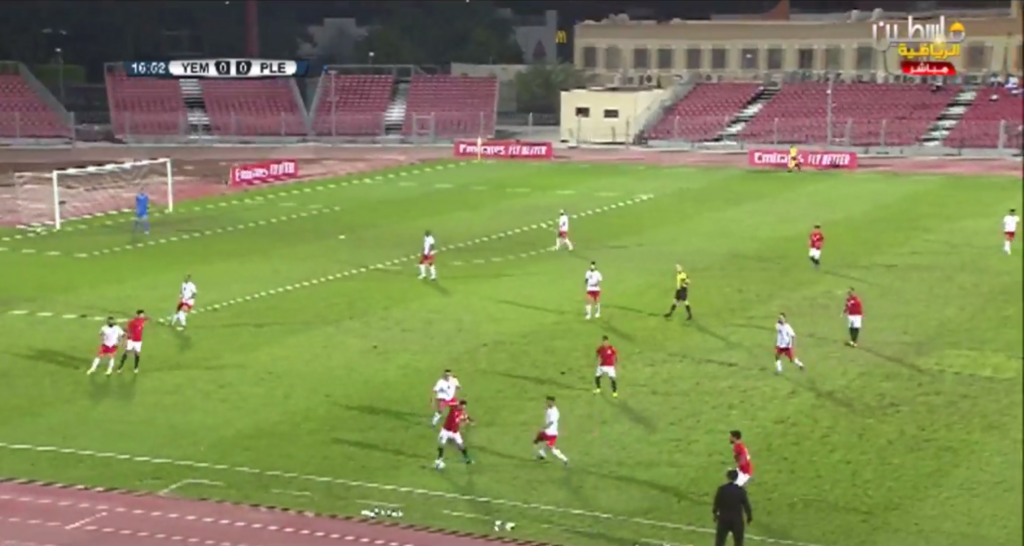
For the purpose of brevity, we will leave it at just these two examples but safe to say there is no shortage of evidence from the Ould Ali era (2018 Bangabadhu Gold Cup matches and the 2019 Asian Cup provide even more evidence). To sum it up, Palestine were a team that defended, defended, defended, and if conditions were perfect could score. It is no accident that Ould Ali holds the record for most draws (Ten. Five of them scoreless!) in his 33-game stint with the national team.
Dabboub introduces pressing
In their 23 years as a fully fledged member of FIFA, Palestine have rarely engaged in pressing but this has fast become a hallmark of Al-Fida’i’s play over the last month.
Palestine have also tweaked their formation from a 4-2-3-1, where the full backs were rarely given license to go forward to a 4-3-3.
The press was utilized to good effect in all three games. Here it is against Comoros- in this particular passage of play the Comorans play the ball back to the goalkeeper who then puts it out of play for a Palestine throw-in in the attacking third.
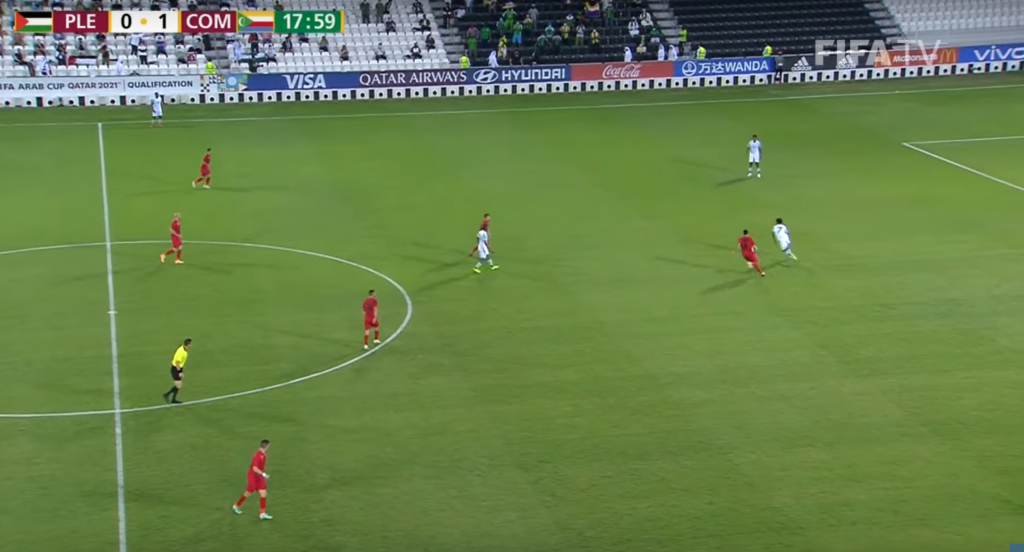
This system does have its drawbacks, and Palestine’s lack of experience with it showed in the first 20 minutes of the encounter. Every occasion that Comoros threatened Hamadi’s goal, was a result of the Africans finding a way to withstand the press, or exploit the space behind. While Palestine might be able to use their physicality to intimidate the Asian field, the Comorans were more than up to the task.
What the press did do in this game was slowly erode the Comoran rearguard and force them into mistakes. When Palestine needed to, they did keep the ball and play some clever football (there’s a nice 10 pass move that results in Kharoub shooting wide in the the 39th minute of this game) but Palestine’s remit was to try and get the ball forward in a quick and efficient manner.
The combination of the press and vertical play played a critical role in Palestine’s third and fourth goals. On the former, a triumvirate of Kharoub, Dabbagh, and Yameen conspire to win the ball in their own half and spring into attack. A surging diagonal run puts Seyam in the box moments later and he finishes off a beautiful counterattacking goal.
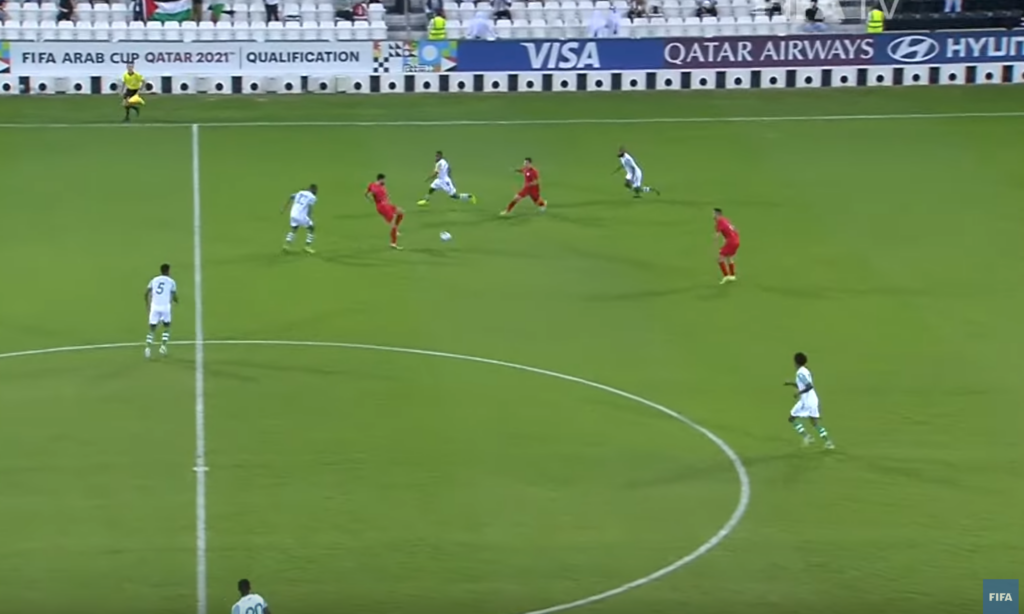
The pattern was repeated for the fourth goal and by the time the match entered the final stanza the Comorans were so worn out by the relentless press and forward play that they conceded fifth.
Fullback play
In the new look 4-3-3, Musab Al-Battat plays a key role on the right wing helping provide support to the midfield and getting far enough forward to be directly involved in goal creation. In fact, he bagged an assist on Palestine’s final goal against Yemen in their 3-0 victory.
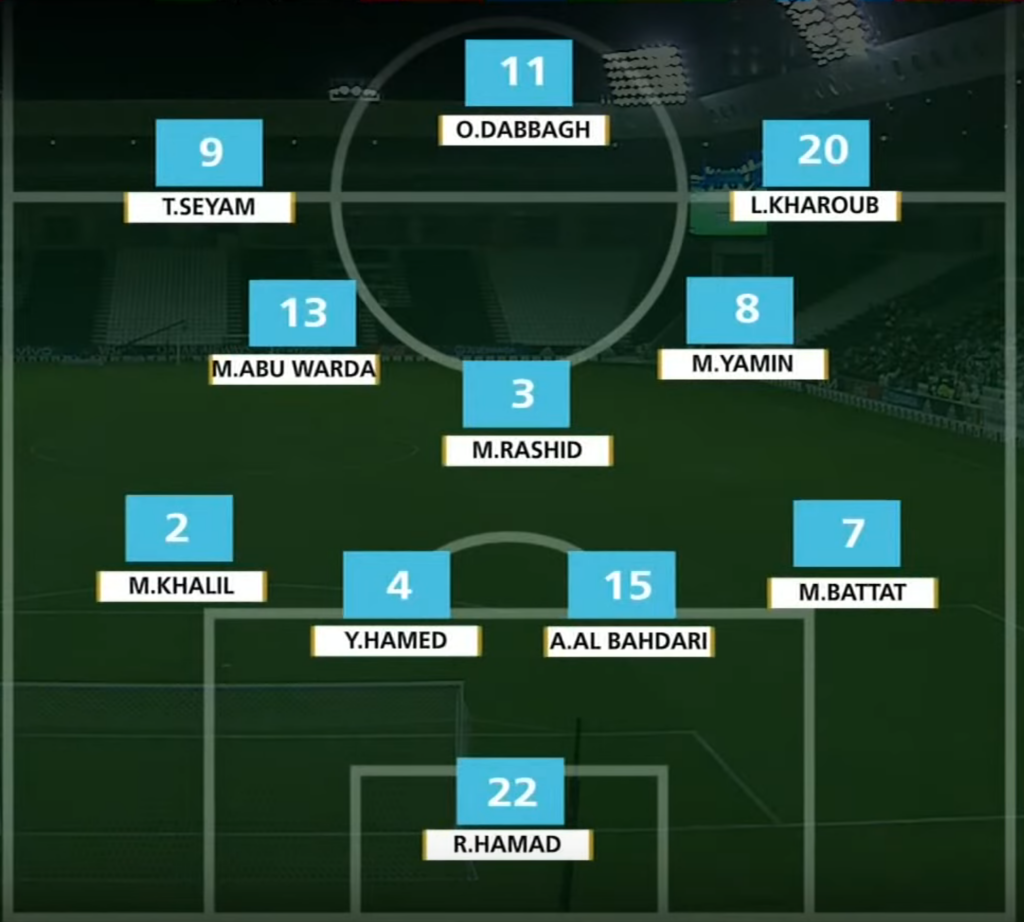
270 minutes into Dabboub’s reign it’s clear that he wants to make use of Palestine’s unique wingers who are tall (both Dabbagh and Seyam are six footers), strong, fast, and technical. This potent combination is a nightmare for any opposing defender to and an overlapping fullback only creates more headaches.
At times, especially in Palestine’s first two games last month, it seemed as if Palestine had a line of four in attack whilst in possession. A far cry from the timid numbers we were used to seeing Ould Ali throw forward.
Room for Improvement
Palestine are not the finished product but this series of games gives fans a reason to hope that brighter times lay ahead. Al-Fida’i found different ways to score and create threats and the final yield of 12 goals in three games is a clear indication that they played well.
There is, however, room for improvement. Palestine do not have a left back and the continued exclusion of Abdallah Jaber is simply unacceptable. While Mohammed Khalil and Ahmed Qatmish did what was asked of them they are simply not the caliber players who could go toe-to-toe with the teams in Group C of the Arab Cup.
There are more problems defensively when it comes to depth as there is only one reliable deputy to the starting duo of Yaser Hamed Mayor and Abdelatif Bahdari. To make matters worse, said deputy can hardly get a game for Al-Masry in the Egyptian League. These are issues that will need to be addressed in any upcoming friendlies between now and December.
Further up the pitch, certain problems will be solved with the return of players who were injured and unable to participate last month. Mahmoud Abu Warda is not suited to playing in the middle of the pitch and Nazmi Albadawi’s imminent return will help generate more fluid play in that area.
In attack, Dabbagh might have shown off his ability to play as a number nine but he is far more dangerous in space on the wing. For all of his goal scoring prowess, Dabbagh’s finishing is still a work in progress; although it must be said he has improved by leaps and bounds over the last two years. Seyam and Dabbagh on either wing complemented by Saleh Chihadeh or Mahmoud Wadi would be a sight to behold and one that needs to be tested in the next international window.
There are definitely still more questions than answers about this team but they faced three opponents in June and beat them in different ways. Singapore committed self immolation after twenty minutes and although Al-Fida’i played well fans can write that game off as an easy game (Palestine scored twice from the spot). Yemen and Comoros, however, were legitimate opponents and dispatching them in the manner that Palestine did is a reflection of a well executed game plan.
Palestine will go against stronger opposition soon enough but it does seem that they are finally playing in a way that showcases their strengths and that could mean a return to their 2017 form that saw them qualify for the Asian Cup at a canter.



